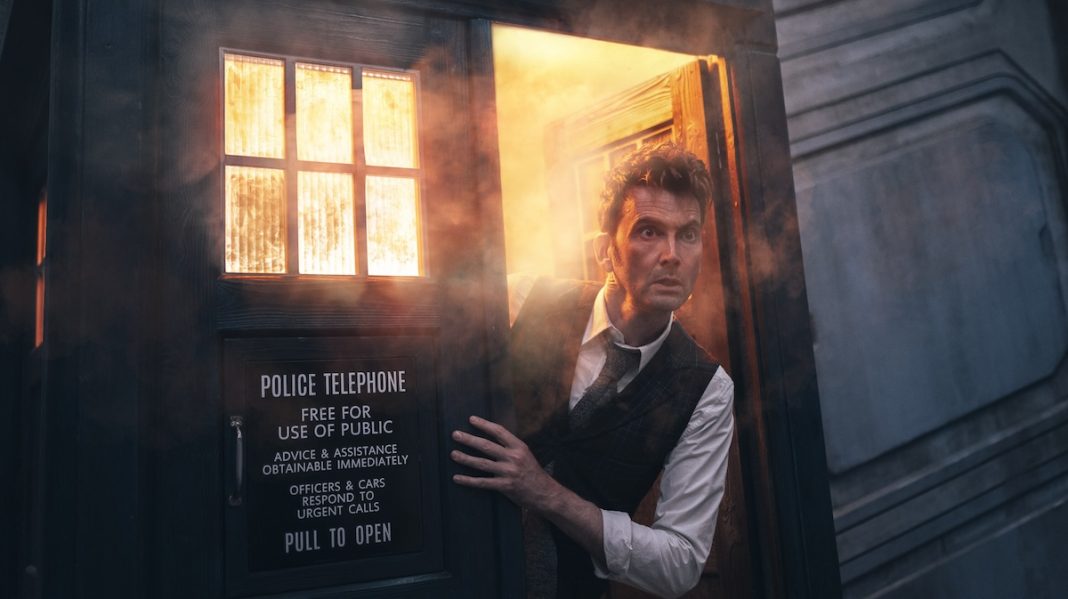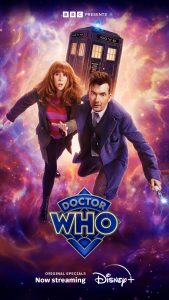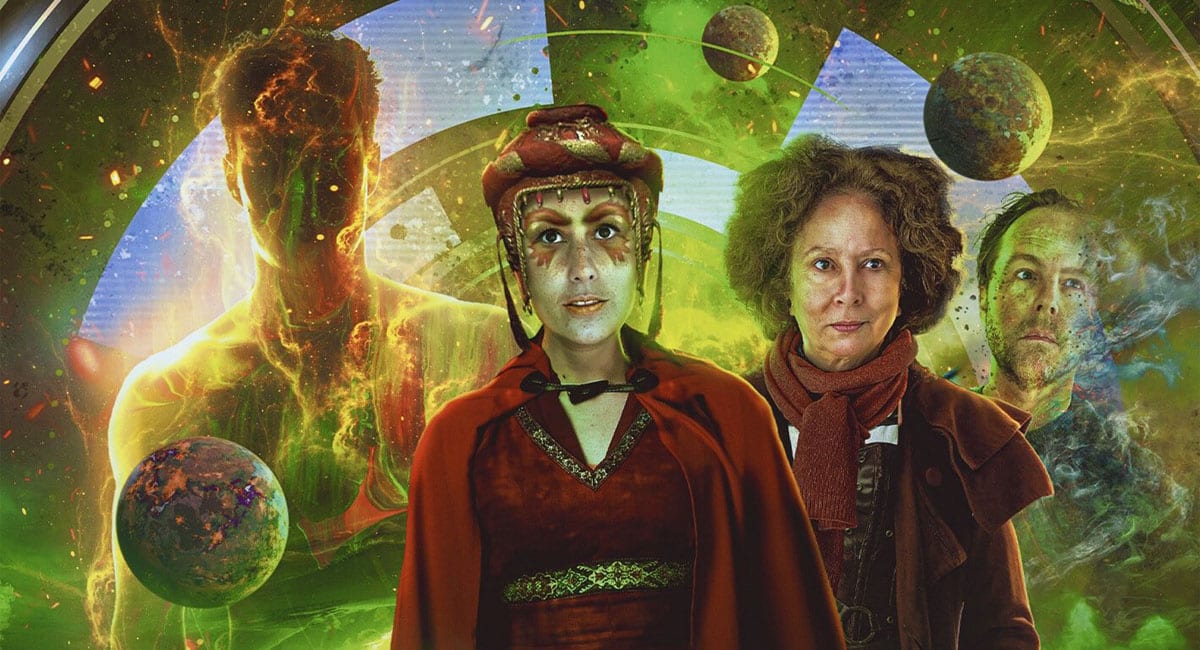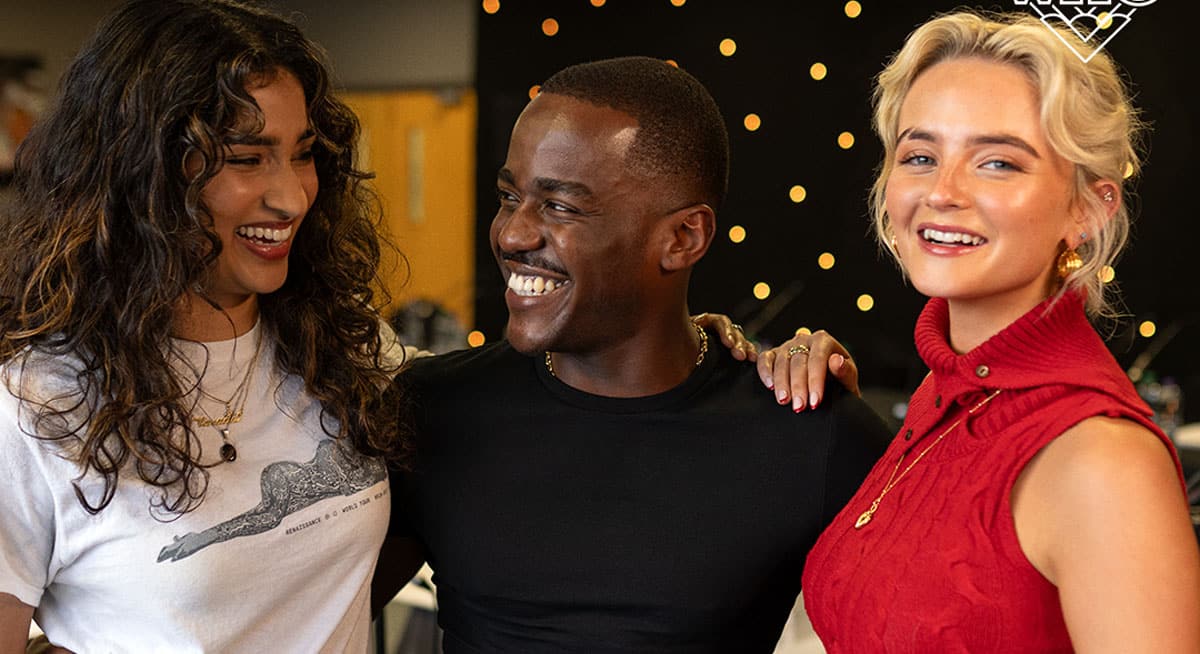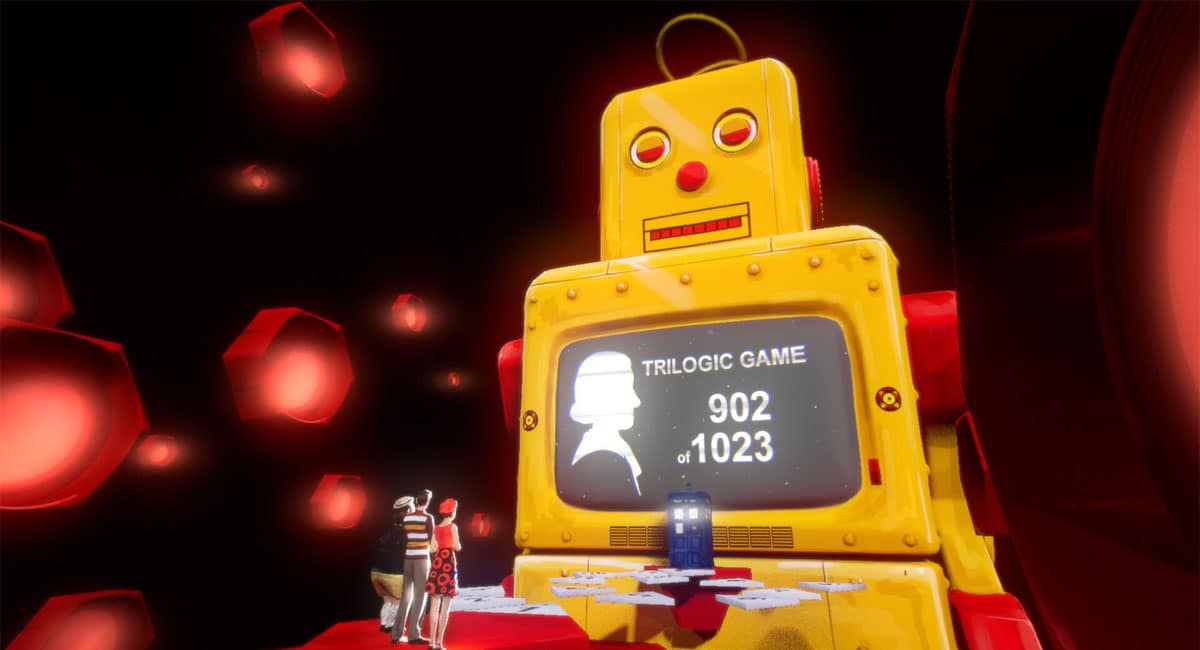Doctor Who, 60th Anniversary Special, “Wild Blue Yonder”
Directed by: Tom Kingsley
Written by: Russell T. Davies
Starring: David Tennant, Catherine Tate, Bernard Cribbons, and Nathaniel Curtis
[This review contains SPOILERS for the episode.]
Fresh off their return in “The Star Beast,” David Tennant and Catherine Tate get a chance at their first proper Doctor-Donna story in over a decade where it’s just the two of them, fully realized, getting into a spooky scenario and trying to find a way out. It’s on the backs of these two acting giants–quite literally in one scene–that “Wild Blue Yonder” lives or dies. Thankfully, this episode is a masterclass in how you do more with less, is an utter triumph in modern Doctor Who storytelling, and reminds us of why these two actors work so well together.
The episode begins at the moment when Sir Isaac Newton, played wonderfully by Nathaniel Curtis, is hit on the head by that infamous apple when the Doctor and Donna–still reeling from Donna’s coffee spill on the new TARDIS console–wind up interrupting the important scene and accidentally giving Newton the word gravity, of which he incorrectly hears the word “mavity” thus changing the term in the Whoniverse. This is later brought up again when the Doctor momentarily remembers the word gravity before correcting himself to saying mavity.

In the “Destination: Skaro” minisode, the Doctor mentions that canon is being disrupted. This whole “mavity” deal probably won’t be permanent. It’s this writer’s opinion is a microcosm of what could end up being a wider commentary by Davies that will be explored in more detail with Ncuti Gatwa‘s Doctor regarding fandom, the show itself, and the mere idea of “canon” and if things are allowed to change or should remain rigidly within a clearly defined line of history. Though, for now, this is simply a theory.
After rushing off from meeting Newton, the TARDIS finally lands on a mysterious vessel. Our two intrepid heroes exit their time machine to see where they are, and the TARDIS suddenly leaves after sensing danger nearby–the machine is sentient–stranding them on this ship. As they explore, the Doctor and Donna find themselves inside a massive corridor where a short, round robot is walking ever so slowly down a pathway toward them. An alien language can be heard giving some instructions that oddly change aspects of the ship for some unknown reason, as well as a mysterious banging noise reverberating throughout the walls.
All the while, some unknown entity is watching them. Eventually, they discover the ship’s cockpit and realize they’ve reached the furthest end of the universe, where there are no stars, and nothing should exist beyond the boundary of blackness. The Doctor claims this is the furthest they’ve ever gone. Still, if we’re splitting hairs, this Time Lord has existed once outside of creation itself when they reignited the Big Bang back in Matt Smith‘s era, as well as most recently in Jodie Whittaker‘s era aboard a ship that was floating between two universes, and that’s not counting Tennant’s adventures at the end of time and in a whole separate universe during his original era.
The mystery and dread of the “nothing” is certainly weightier here, where both characters find themselves all alone and unprotected, but technically, the Doctor has adventured further.
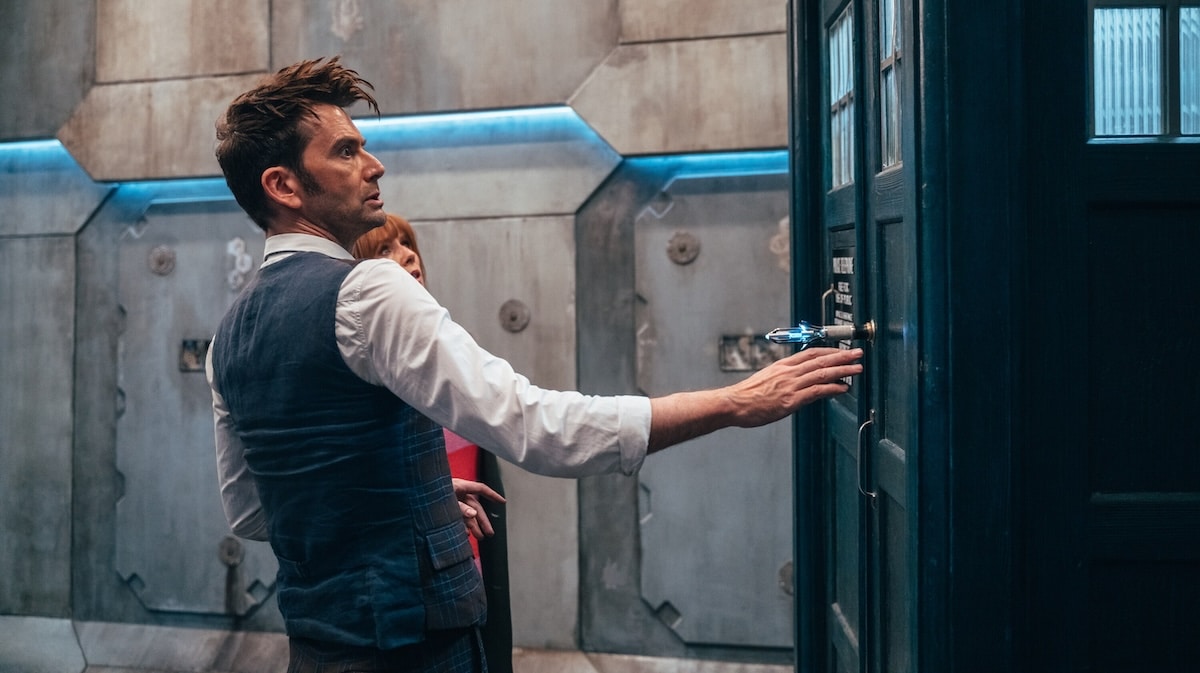
Still, none of this takes away from a wonderful setting for the story. During this moment, they also discover that three years before they showed up on this ship, an airlock had opened and closed, meaning something or someone was once aboard, but now the only two life signs are the Doctor and Donna. Following these revelations, the two find the controls and begin attempting to get the ship up and running again when they’re suddenly bested by the mysterious entity watching them.
In some incredible acting by Tate and Tennant, we get two parallel discussions between the Doctor and Donna where they believe they’re talking to their friend until it is quickly revealed to be two “Not-Things,” as they call themselves, that have taken their forms. These Not-Things attempt to steal the Doctor and Donna’s identities as they mimic their bodies and then begin to mimic their minds. However, this process is difficult, leading to some incredible body horror throughout the episode, showcasing how inhuman these creatures are.
We never learn what they look like, which I believe is for the best, but we do learn that they seeped into our reality from another one and have been monitoring our universe for some time. In fact, they share many similarities with the creature of the Tennant/Tate original era episode “Midnight,” which saw a mysterious creature steal people’s voices to take their identity. It would be very cool if these No-Things were related.
As events press on, the Not-Things attempt to kill the Doctor and Donna, leading to some fun chase scenes and tense moments, as well as the scene where the Doctor invokes the superstition that ghouls can’t cross lines of salt without counting every grain first. From the time I’m writing this, we already know this will be important later. Not long after the spell is broken, the Doctor and Donna can lock themselves in the cockpit for protection, where they’re finally able to make out the answer to the banging noise that’s been clanging throughout the ship during the episode. The corpse of the captain of the ship has been floating outside around the ship for the last three years, having killed themselves to escape the Not-Things.
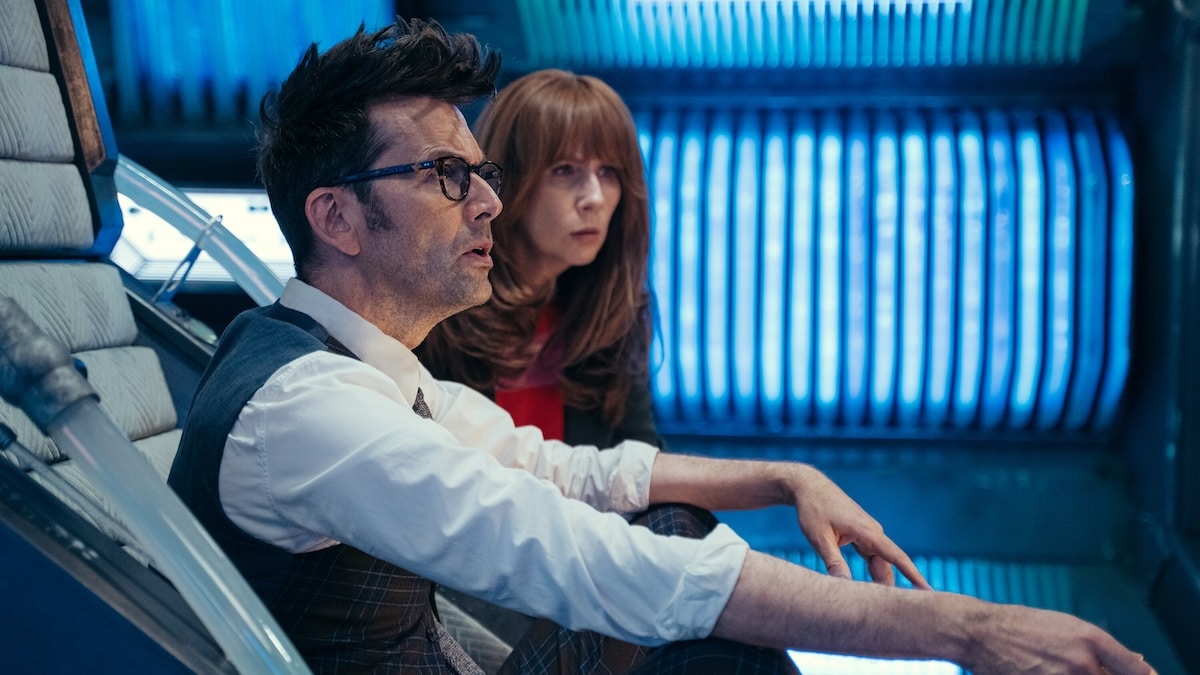
This is around when the duo discovers that their pursuers can copy them as fast as they think. They attempt to stop thinking. However, the Not-Things remind them that too many questions need answering, leading to the Doctor breaking his silence to think. For me, the consistent highlight of this episode has been the constant back-and-forth we’ve seen between two Doctors and two Donnas, with Tennant and Tate playing incredible opposites of themselves. The cockpit scene is another moment that showcases how well these two go together as actors and their characters.
They’re able to parse out that before the captain killed themselves in an attempt to keep the Not-Things from copying her, she also set the ship to become a slow bomb, which explains why the words the Doctor and Donna keep her are blaring so slowly, and why the robot they meet at the beginning is walking slowly down a very long corridor. If the countdown is slow enough, the Not-Things won’t understand what will happen to them.
However, now that the Doctor and Donna are on board, they realize they need to speed up the countdown to keep the Not-Things from getting free since they’ve been copied almost completely. The Doctor does just that, and the creatures begin racing down the corridor to stop the robot from pressing the “destruct” button. The chase that follows is a ton of fun, and I admit I chortled a bit when the Doctor throws the Not-Donna down as she comes for him. It’s a funny image in context. We also get a striking image of the Not-Doctor running on all fours down the corridor, and it is a sight to be held. I dug it, much like everything else in this episode.
Thankfully, the TARDIS returns just in time as the Doctor deduces that the danger the time machine has been sensing will end if the ship blows. It’s a wonderful moment as the TARDIS appears playing “Wild Blue Yonder,” oddly enough the anthem of the U.S. Air Force. The smile the Doctor gives seeing the TARDIS is heart-melting. However, this is when he’s forced to choose the two Donnas to compete to convince the Doctor that each of them is the real one.
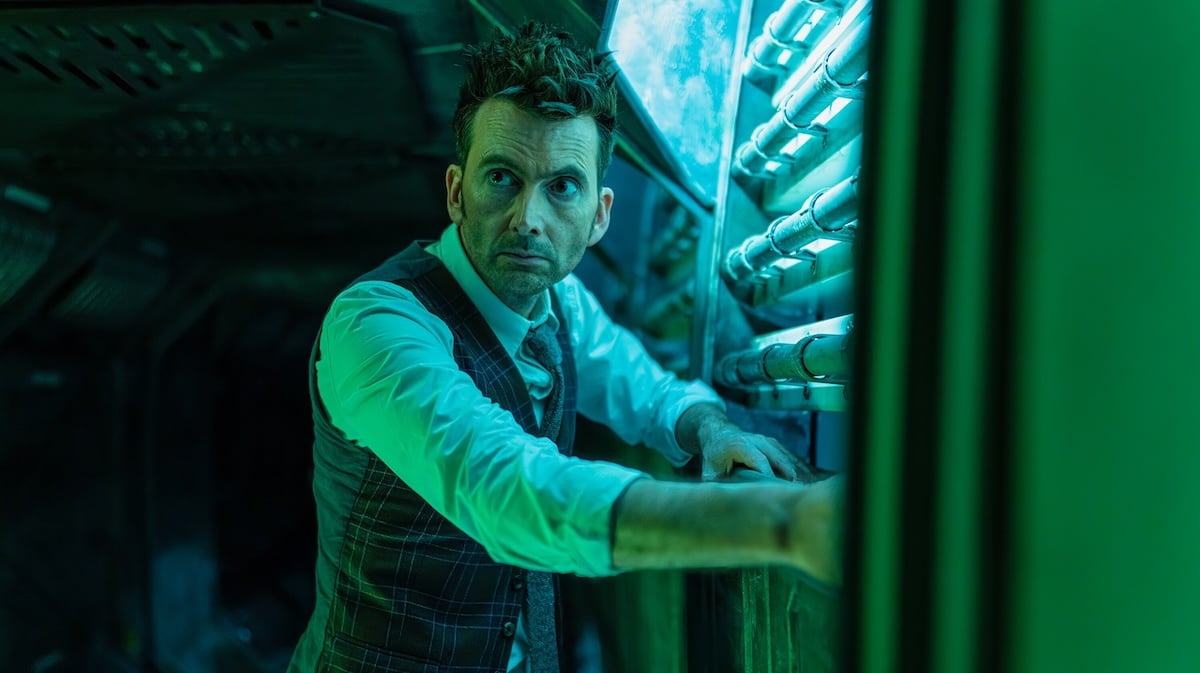
In an incredible moment of allowed imperfection, Davies has the Doctor choose the wrong Donna as she’s that convincing to him, and what follows is a truly harrowing moment of the real Donna shouting at a disappearing TARDIS as the ship blows and death barrels down on her. Obviously, the Doctor is going to save her, but Tate’s acting is so fantastic, and the moment lingers for just long enough that in your heart, it’s easy to think for just a second,
“Maybe this is how it ends.” I genuinely like this moment, as clearly, the Doctor is fallible in the past, but generally, they’re shown to be the kind of hero that would know intrinsically who their friends are.
The Doctor was fooled, and though they’re able to figure it out in the nick of time and save Donna, feeding the Not-Donna to the flames, it is still a breathtaking character moment that had my jaw dropping to the floor (much like the Not-Doctor in an earlier scene). It’s these kinds of moments where I feel like this show goes from simply being a sci-fi adventure program to something more. It allows the characters and the audience to be shocked in the very same ways and works really, really well.
However, before they scamper off to their next adventure, we get a touching scene where the two discuss where the Doctor has been since Donna last saw him. It’s triggered earlier in the episode when the Not-Donna tells the Doctor that because of her link with the real Donna, she can see his memories of the last fifteen years, which was alluded to in the previous episode. It’s also nice that Davies decides to do this because it is the first slow moment these two get since Donna got her memories back, so I’m glad they’re getting to play some catch-up.
Unfortunately, the real Donna can’t make sense of the Doctor’s memories now that she’s let go of the power of the Time Lords, so for her, it’s all a blur that seems to rest in the back of her head. The Doctor doesn’t give up any information to Donna, however. While this is always the case with them, she doesn’t press. Not to continue gushing, but these two are so good against one another, and there’s an absolute understanding that the Doctor has gone through a ton of trauma since Donna last saw him, which is lingering in the air but is never fully spoken—and it’s great.
Finally, the episode ends with the best part of the anniversary specials so far. The two return to Earth, and they’re immediately greeted with a hello from the legendary Bernard Cribbins, returning in his role as Wilfred Mott, Donna’s grandfather in what would sadly be his final filmed appearance before he died in 2022. Wilfred was last seen in Tennat’s first final adventure as the Doctor in “The End of Time,” where he acts as the companion to the story.
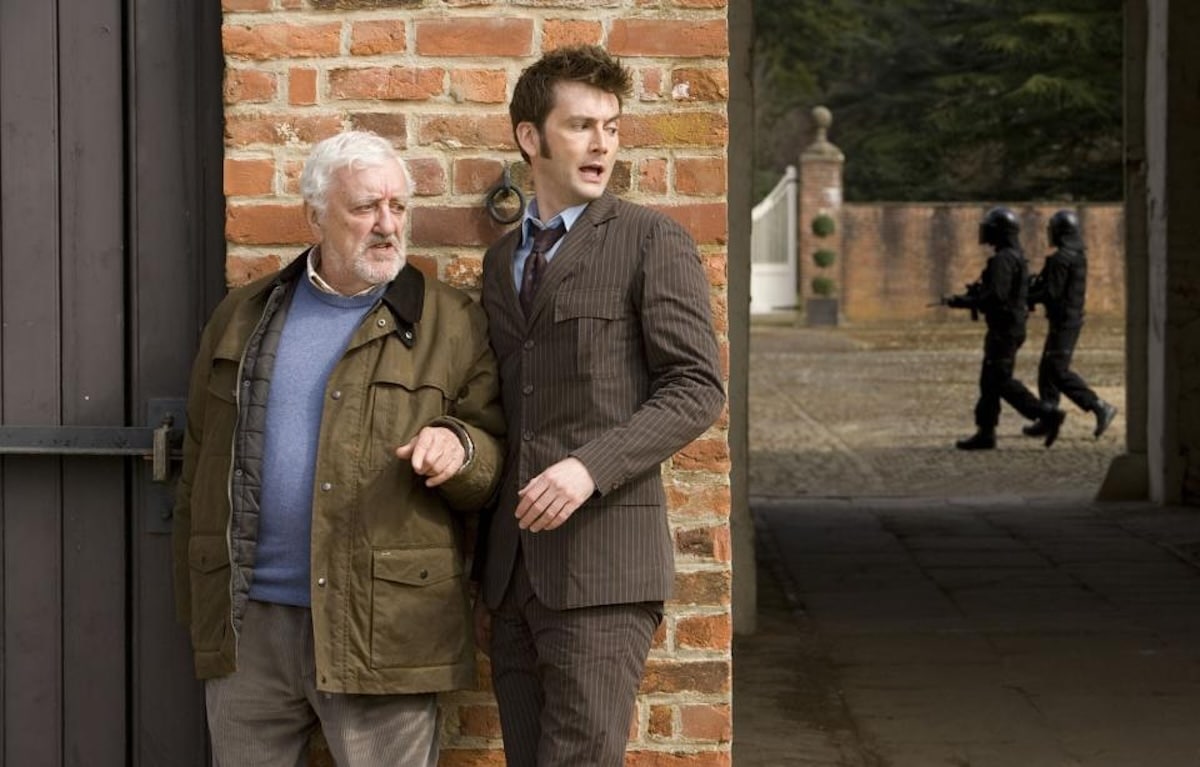
I love Cribbins so much, and personally, the character of Wilfred is my favorite companion. Seeing him again, even if just for this scene, was emotional, but in a good way, as Cribbins plays the character as if he had never left him behind. Also, the fact that Wilfred is meeting the Doctor with Tennant’s face again is just the cherry on top of their reunion.
Of course, the reunion is short-lived in that Wilfred has to explain that when they’ve been gone, the world has begun “coming to an end,” and chaos soon erupts around them. The final image is of a plane crashing down nearby as the trio hunkers behind the TARDIS for safety. What a way to end an episode and prepare us for what comes next!
“Wild Blue Yonder” is, of the two specials that have aired so far, the strongest one yet. It’s quite simple in concept, but galaxy brain in execution. There isn’t much going on, but that allows for a lot of slow beats that our characters deserve to reconnect with one another, and the action that is present is both fun and exciting. I really, really love this episode, and it’s easily one of my favorites from modern Doctor Who in many years.
As this new era begins under Davies 2.0, however long it lasts, the 60th anniversary special “Wild Blue Yonder” will be remembered by many as a modern classic, and I love that.
Doctor Who (2023-) is now streaming on Disney+ in the US and globally. You can watch Classic Doctor Who in the U.S. on Britbox and Tubi TV. Revival-era Doctor Who (2005-2022) and its spinoffs, The Sarah Jane Adventures and Torchwood, are available on MAX. Meanwhile, other modern spinoffs, such as CLASS, can be bought on Prime Video, and K9 can be streamed on Tubi TV. All of the above, minus K9, are streaming in one place on BBC iPlayer in the UK.


